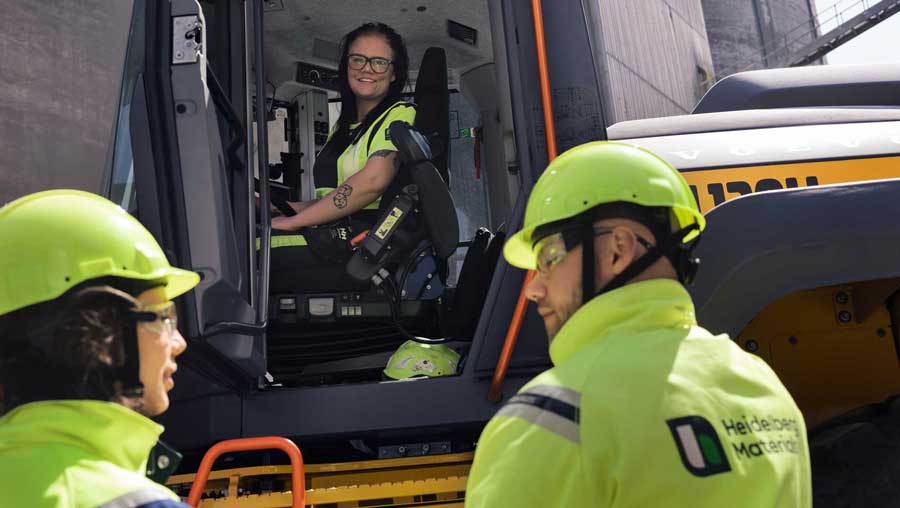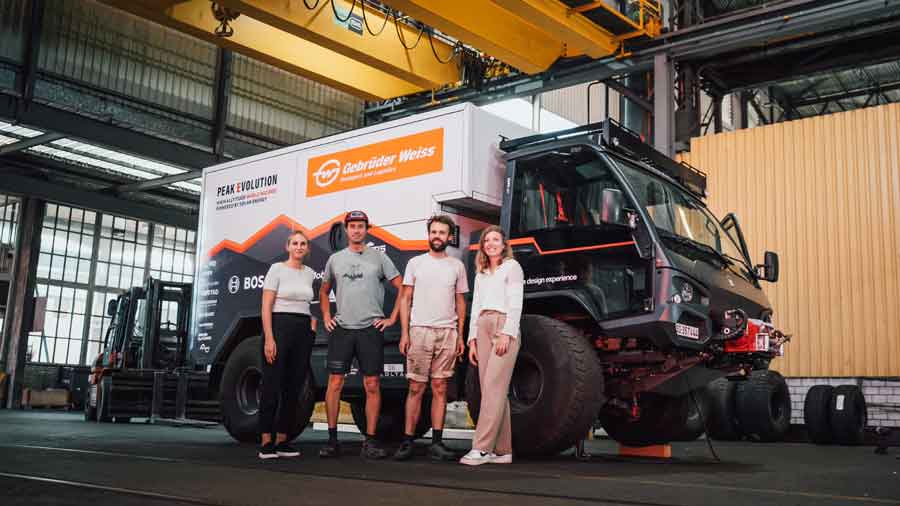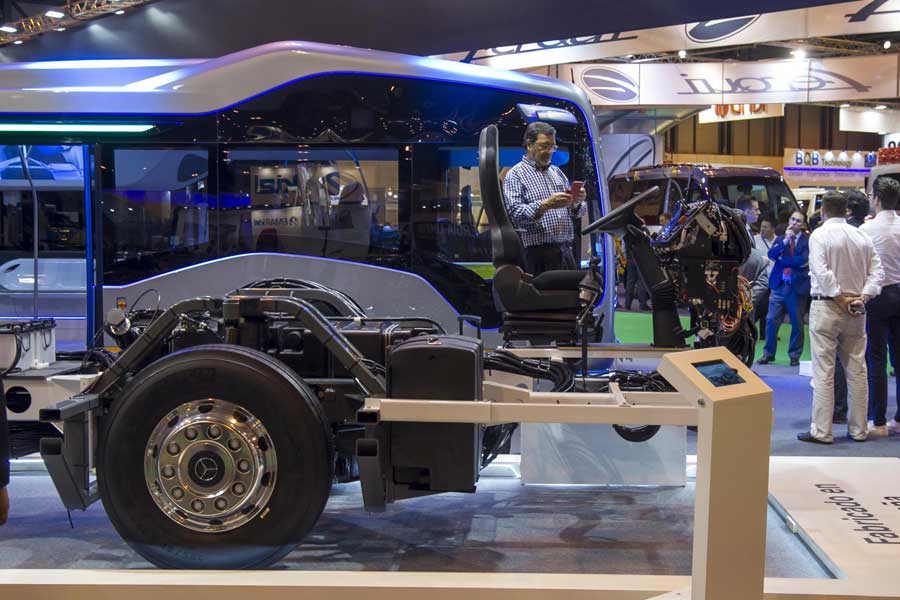MAN Truck & Bus demonstrates its expertise particularly when it comes to building chassis units for emergency services vehicles. The new MAN Truck Generation is a key aid to the challenging work of the emergency services.
MAN launched its new Truck Generation in spring 2020. In developing its new trucks, MAN consistently focused on the drivers and their transport task. The initial focus was on the MAN TGX and long-haul transport. By mid 2021, MAN will have updated its entire product portfolio to the new model series, optimally meeting the needs of every transport task and sector-specific application. In autumn 2020, the first body manufacturer launched fire service vehicles based on the new MAN TGL and MAN TGM series chassis.
The familiar division into four model series has been retained: The new MAN TGL covers the weight range from 7.5 to 12 tonnes. Exclusively available in 4×2 versions, it is suitable for fire service use as a light truck with portable fire pump or built-in fire pump and a small rescue truck. The next weight category up is the new MAN TGM, as a two-axle truck from 12 to 18 tonnes and a 26-tonner with three axles. The two-axle TGM featuring on-road gear and all-wheel drive is the most widely used fire service vehicle almost everywhere in the worldwide, both in terms of numbers and variants. Engines and rescue engines, tankers, turntable ladders, aerial ladder platforms and small rescue trucks are the most common types of standardised fire service vehicle in use in Germany. The new MAN TGS from 18 to 41 tonnes gross train weight is focused, as before, on heavy-duty applications such as tankers and specialist fire trucks, high-reach aerial ladder platforms or skip-loaders. This series has the widest range of variants from two to five axles. MAN HydroDrive is offered in addition to the on-road gear and all-wheel drive. The hydraulic drive in the front axle is the first choice when the vehicle is run mainly on paved roads and additional traction is rarely needed. Many fire services utilise this tried and proven system for their skip-loaders.

The cab – focused on the driver
Once a lion, always a lion. The new MAN is recognisable at the first glance. Its unmistakable design, now thoughtfully enhanced, extends across all series. The cab variants have been given new designations. The compact cab of the TGL and TGM series is now the CC, while the longer version with plenty of storage space behind the seats is the FN. The four-door double cab DN retains its capacity for a crew of six. The MAN TGS series starts with the NN, the cab for short-haul transport applications. In this series, too, the longer version with a low roof is the FN. Matching the vehicle’s intended application, the interior is finished in a dirt-resistant Moon Grey colour.
Better visibility means added safety. The LED headlights, optionally available instead of H7, provide wider light distribution and longer range. The high beam assist prevents dazzling of oncoming vehicles or of those ahead by automatically dimming in good time. The curvy LED daytime driving light array visually emphasises the styling of the headlights, and thus of the new MAN Truck Generation.
Emergency services crews need to get in and out of their vehicles frequently, and quickly. So safe and convenient entry and exit is crucial. The doors open at a right angle to 89 degrees. Wide steps arranged like stairs, with non-slip surfaces and long grab handles, allow for ergonomically straight entry and exit. In the parked position, the steering wheel folds horizontally forward to free up space in front of the driver’s seat. That makes entering the vehicle much easier, especially when continually changing driver. The steering wheel is swung back into the driving position at the press of a button. The newly developed seating generation offers a wide adjustment range: 12 centimetres in height and 23 centimetres in length, which is five centimetres more than before. The portfolio includes a centre seat, which is required in the CC and NN cabs for crews of three fire-fighters as stipulated by fire service vehicle standards.

MAN has completely revised the operating concept for its new Truck Generation. Drivers operate the gearbox control unit, continuous brake and driving program selector on a drop arm without taking their hands off the steering wheel. A button panel replaces the rotary switch controlling the all-wheel drive and differential locking. To the right above the steering wheel is the large switch for the optional electronic parking brake. The parking brake is activated automatically when the vehicle is parked and released when it starts up.
The cockpit, slightly angled towards the driver, is clearly divided into control and readout levels, helping drivers to concentrate on the traffic, especially when out on a mission. The steering wheel, operating elements and buttons are ergonomically arranged for easy reach. The indicators and displays are positioned further away. That makes it easier for the eyes to adjust when glancing down from the road to view the instrument panel.
The Basic instrumentation version comes in a classic design featuring two large analogue speedometer and tachometer dials with a 5″ colour display in-between. The Professional version has a 12.3″ colour display in the centre, providing a wide range of information on the vehicle’s status, as well as controlling the infotainment, navigation and driver assistance systems. To the left and right of it, a semi-circular digital scale indicates the vehicle’s speed and revs.
A cockpit display further to the right provides even more information. It’s the location for the new MAN media system. The display is optionally 7” or 12.3” in size. The infotainment system is intuitively operated via a micro-rotary pushbutton control.
In the MAN TGS and MAN TGX series, driver safety is enhanced by an airbag with multifunction steering wheel combined with a seatbelt tensioner.
The new MAN Truck Generation offers the crew a practical and helpful feature in the form of Easy Control: a panel containing four buttons on the inside of the door. It is easily reached when the driver’s door is open. There is no need to bother climbing into the cab or stretching uncomfortably to access the control from the doorway. Two of the buttons can be assigned functions by the MAN workshop team from a selection of options. The available functions include activating the power take-off, revolving beacons, cargo space lighting or spotlights, or releasing the liftgate. The third button is factory-set as the engine on/off, or optionally for closing the windows and sliding roof. The fourth is always reserved for the hazard warning lights.

Application-specific customisations from MAN Individual
MAN Individual can customise the cab, chassis, driveline and vehicle electronics as required to ensure that the combination of the MAN chassis with the cab and the specialist body manufacturer’s body unit is turned into an emergency services vehicle. This offers the advantage that customers have a single point of contact at MAN, and acquire a vehicle that has been assembled in line with industry standards based on MAN-certified work, complete with a full warranty. Extending the CC cab by 285 millimetres increases the space available behind the seats, for example to accommodate seats with integrated breathing apparatus. Aerial rescue vehicles often need a flat roof so as to position the ladder set or aerial ladder platform above the cab and comply with standard specifications governing the vehicle’s height. Many body manufacturers dock their crew cab onto the CC cab. MAN provides a large communication hatch. The cut-out in the rear cab wall, tested in accordance with the ECE R29-3 crash safety standard, is 1753 mm wide and 750 mm high. It is a great aid to communication between the driver in the front and the crew sitting in the back.
New: 320 hp engine for MAN TGM from 13 tonnes
The MAN D08 engine series powers the TGL and TGM. In the current Euro 6 version, the 4.6-litre four-cylinder unit develops 160, 190 or 220 hp, and is installed exclusively in the MAN TGL. The 6.9-litre six-cylinder engine in the smallest version developing 250 hp is the top engine in the TGL series, and also the entry-level power unit for the MAN TGM. The next power classes up are 290 and 320 hp. A new feature – though exclusively for emergency services vehicles – is that the top-of-the-range engine is no longer reserved just for the 18-tonne truck from the TGM series. Now, engines and rescue engines, rescue trucks as well as turntable ladders of the weight classes M II (up to 14 tonnes gross train weight) and M III (14 – 16 tonnes gross train weight) featuring all-wheel drive can also be equipped with the 320 hp engine in the public service vehicle version. In this engine, installed in the TGM from 13 tonnes gross train weight upwards, the torque reduction stipulated by law in the event of a malfunction in the exhaust gas treatment system (such as a lack of AdBlue) is disabled so as not to jeopardise the operational running.

The MAN TGS is driven by one of two engine series, depending on the power range. The newly developed D15 9.0-litre six-cylinder engine launched in 2019 covers the power range from 330 hp, to 360 hp and up to 400 hp. The 12.4-litre six-cylinder D26, which was likewise completely revised in 2019, features 430 hp, 470 hp and 510 hp power classes.
Due to the SCR technology, the exhaust gas aftertreatment in all engine series of the new MAN Truck Generation requires the AdBlue additive in both the Euro 5 and Euro 6 versions.
The second component that is essential to an efficient driveline is the gearbox. With MAN TipMatic, an automated manually operated gearbox is available for all engines. There are six-speed variants for the four-cylinder TGL, and 12-speed variants for the six-cylinder TGM and TGS. The rotary programme selector switch is no longer located in the instrument panel. The control is now conveniently positioned on the right-hand drop arm. As before, for almost all versions MAN offers the “Emergency” drive programme, activated by the driver when responding to an alert. The automatic gear selection provides shorter gearshifting times, higher gearshift speed and a special downshift logic when braking to accelerate quickly and powerfully after turning or crossing a junction. Depending on the series, other programmes for emergency services vehicles which the driver can select as required using a turn wheel on the TipMatic stalk are Offroad, Low Range and Manoeuvre. Offroad is – as the name suggests – designed specially for driving off-road. It provides targeted power and revs to deliver strong torque and a high engine braking effect. The Low Range mode for the MAN TGS series, enabled on vehicles with a selectable transfer case and off-road reduction, takes performance levels a step higher still. Manoeuvre mode enables the driver to manoeuvre slowly and precisely.

VAS and BirdView for added safety
Fire service vehicles operate in urban traffic and in narrow streets alongside parked cars, and need to manoeuvre and reverse at the scenes of incidents as well as at the station. Critical situations can occur at any time when turning, as pedestrians, emergency services personnel, cyclists, cars or obstacles may be in a blind spot. The MAN VAS video turning assist system provides the driver with a view of such blind spots. A 150° wide-angle camera mounted on the passenger side of the cab transmits to a 7″ monitor on the A-pillar. This means that when the driver looks in the right side and kerb mirrors he also has a clear view of the monitor screen. The system is activated automatically when the turn indicators are operated, or manually via a switch.
It’s often a tight squeeze when out on a mission with lights flashing and sirens blaring along streets with parked cars, at the scenes of incidents as well as when manoeuvring back at the station, so a clear view is crucial. The MAN BirdView 360° camera system gives the driver an overview of what’s going on around the vehicle, where obstacles are, and where people are moving. BirdView is active when the turn indicators are operated, when reverse gear is engaged, or at low speeds up to 40 km/h. MAN Individual mounts four 180° HD wide-angle cameras to the front of the cab and around the body. The bird’s eye view is displayed on a 7” monitor. MAN VAS and MAN BirdView can either be ordered directly or retrofitted later through MAN After Sales.
Optimised collaboration with body manufacturers
Electrical and electronic interfaces for data exchange with the body unit are now also installed behind the cab, in addition to the position behind the front panel as in earlier model series. The labour-intensive and time-consuming laying of cables through the cab from front to rear is largely eliminated. That is one of the advantages of the completely new electronic architecture developed by MAN, whose “central nervous system” is controlled by a single central on-board computer. The driver sees how this close collaboration between MAN and the body manufacturer works in the concentration of body functions on a separate panel of switches on the instrument panel.










